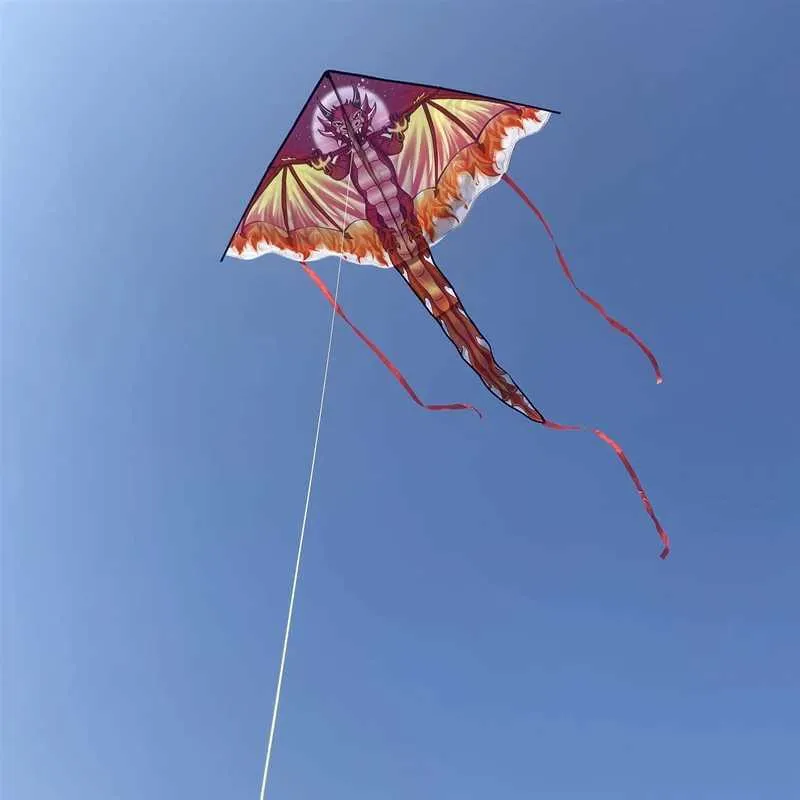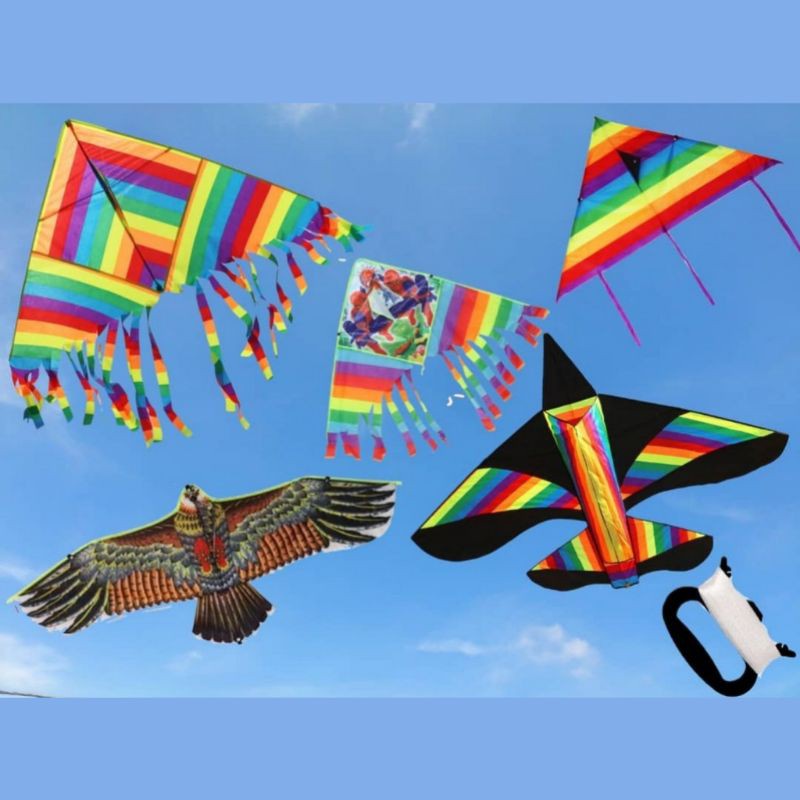Introduction to Quadrilaterals and Kites
Quadrilaterals are four-sided polygons central to studies in geometry. Each has four sides, angles, and vertices which join to form various shapes. Among these, lies the distinctive kite, a special type of quadrilateral.
A kite in geometry stands out with its two pairs of adjacent sides that are of the same length. This quality makes it easy to distinguish among other quadrilaterals. Asking which quadrilateral is a kite? The answer lies in observing these pairs.
Kites possess intriguing features and follow specific geometric rules. Their unique shape recalls childhood memories of flying colorful kites on windy days.
In the realm of mathematics, however, kites have implications far beyond play. They serve as a perfect example to demonstrate symmetry, angles, and properties of diagonals and to solve complex problems.
This exploration of kites will delve into their defining attributes, delve into their mathematically rich properties, and illustrate their practical applications in the real world.
Defining Characteristics of a Kite
A kite, a special quadrilateral, exhibits unique l feature. Two adjacent sides of equal length form one pair, followed by another. These pairs, adjacent to each other, trace the kite’s characteristic shape. To identify a kite in geometry, look for this symmetry in side lengths.
Recognizing a kite is straightforward when you find these pairs. Their presence confirms the shape’s identity as a kite. This is the definitive answer to the question, ‘which quadrilateral is a kite?’
A geometrical kite resembles the flying toy kite. Both share a common silhouette, but in geometry, the kite’s precise dimensions have greater significance. Its form plays a key role in exploring mathematical concepts.
Distinct from squares and rectangles, a kite’s angles and sides offer unique properties. They open up a range of geometric applications. So, when faced with different quadrilaterals, spotting the kite becomes an exercise in examining side lengths.
The defining characteristics make kites fascinating subjects within geometry. Their equal adjacent sides are foundational to their identity and to understanding their properties thoroughly.
Properties of Kites in Geometry
Kites in geometry boast distinctive properties. As we know, they have two pairs of equal-length adjacent sides. These properties set kites apart from other shapes like rectangles and parallelograms. Not only in their appearance but these attributes influence their geometric behavior. Understanding the properties of kites helps us recognize and solve geometric challenges.
Diagonals and Their Unique Intersections in Kites
One defining property of a kite is the behavior of its diagonals. The diagonals of a kite intersect at right angles. This forms two pairs of congruent triangles internally, thereby creating an axis of symmetry. This behavior is unique to kites. No other quadrilateral family member shares this quality, making it a key identifier.
Knowing this, mathematicians can confirm a quadrilateral as a kite. They check if the intersecting diagonals create right angles. Thus, the classic question – which quadrilateral is a kite? – is often answered by examining diagonals.
Unique relationships among the sides and angles of a kite add further to its characteristics. For example, the angles between the pairs of equal sides are equal. This adds to the kite’s symmetry. The understanding of diagonals is crucial in kite-related problem-solving.
Calculating the Area and Perimeter of a Kite
A kite’s area is calculable using the lengths of its diagonals. The formula involves multiplying the lengths of the diagonals and then dividing by two. The perimeter of a kite, however, requires knowledge of all the sides. Summing up the lengths of all sides gives the perimeter. These calculations are vital for practical applications in various fields.
Solving Problems: Examples Involving Kites
In problems involving kites, geometrists often need to find missing angles or side lengths. They may use the properties of the kite’s angles and diagonals. For example, knowing the lengths of the diagonals can help calculate the area. Similarly, the knowledge of one pair of adjacent sides can help find the kite’s perimeter.
Real-World Applications of Kite Shapes
Kite shapes are not just theoretical. They have practical real-world applications, such as in design and construction. Their properties are exploited in structures requiring stability and symmetry. The principles of a kite’s geometry influence many architectural designs.
Conclusion: The Significance of Kites in Geometric Studies
In conclusion, kites are not just playful objects in the sky. They are vital players in the field of geometry. Their unique properties, such as equal-length adjacent sides and intersecting diagonals at right angles, offer a wide array of possibilities. They are particularly useful in geometric proofs and constructions, making them significant for both education and real-world applications.
Diagonals and Their Unique Intersections in Kites
In every kite, the diagonals cross in a special way. They always meet at a 90-degree angle. This right angle is a clue to the kite’s shape. It tells us that we’re looking at a kite and not some other quadrilateral.
These crossing lines cut the kite into four smaller triangles. Two of these triangles share the same size and shape. We call them congruent triangles. This matchup is rare among four-sided shapes. It’s part of why kites are so interesting in geometry.
The point where the diagonals intersect is central to the kite’s symmetry. It splits the kite into mirror-image halves. On a real kite, this point is where the frame is most sturdy. In geometry, it’s where we often start solving kite problems.
The right angles in a kite are not just math facts. They have practical uses too. Builders and crafters rely on these angles for precise work. When they design objects with kite shapes, they use this natural cross point.
Summing up, the intersection of diagonals in a kite is not just unique. It’s key to understanding the kite’s geometry. It’s a tool for solving problems. And it helps people make things in the real world with care and accuracy.
Calculating the Area and Perimeter of a Kite
When exploring which quadrilateral is a kite, understanding how to determine its area and perimeter is essential. Both measurements play a significant role in practical tasks such as construction, fabric design, and even kite-making for recreation.
The Formula for Kite Area
The area of a kite is unique. You calculate it using the lengths of its diagonals. To find the area, multiply the lengths of the diagonals together. Then, divide the product by two. The formula is simple: Area = (d1 * d2) / 2, where d1 and d2 are the kite’s diagonals.
Consider this example. If the diagonals are 10 cm and 8 cm respectively, the area would be (10 * 8) / 2 = 40 cm^2. This calculation is quick and practical and shows the kite’s capacity within a space.
Working Out the Perimeter
Calculating the perimeter involves summing the lengths of all four sides of the kite. If the sides are not all the same length, you must know the length of each one. For kites with equal sides – let’s say 5 cm each – the perimeter is 4 * 5 cm = 20 cm. This perimeter reflects the total distance around the kite and is crucial when measuring boundaries.
In real-life applications, the ability to quickly determine a kite’s area and perimeter is invaluable. It allows designers to accurately plan materials and costs. It also helps students in geometry to solve complex problems and understand spatial relations. Thus, the kite not only serves as an interesting study in geometry but also as a practical tool for various applications.
Solving Problems: Examples Involving Kites
The unique properties of kites in geometry can prove invaluable when tackling various mathematical problems. Here are a few examples that demonstrate how one might apply the properties of kites to solve complex issues and understand concepts.
Example 1: Calculating Area with Given Diagonals
Suppose you have a kite where the lengths of the diagonals are 15 cm and 20 cm. To find the area, you use the formula Area = (d1 * d2) / 2. Insert the given values to get the area: (15 * 20) / 2 = 150 cm^2. This formula is quick and efficient for area calculations.
Example 2: Determining Missing Side Lengths
Imagine a geometry problem where you know the perimeter of a kite but not all the individual side lengths. If the perimeter is 40 cm and you know three of the sides are 10 cm each, simple subtraction helps you find the fourth side: 40 cm (total perimeter) - 30 cm (sum of known sides) = 10 cm (length of the unknown side).
Example 3: Using Kite Properties in Construction
Construction workers might use the properties of a kite when designing a roof. If they know the lengths of the diagonals, they can calculate the necessary materials. This also ensures the design provides the desired aesthetic and structural integrity.
Example 4: Finding an Angle
When given specific angles in a kite, the properties of its angles allow for the easy determination of missing angles. If one interior angle is 120 degrees, since the sum of all interior angles in a quadrilateral is 360 degrees, and the kite’s unique angle properties come into play, calculating the rest is straightforward.
Through these examples, it’s evident that understanding the properties of kites offers a powerful toolkit for problem-solving in geometry. From simple calculations to real-world applications, the knowledge of which quadrilateral is a kite? becomes a practical and necessary part of spatial reasoning.
Real-World Applications of Kite Shapes
Kite shapes are not just theoretical concepts within the confines of geometry; they extend beyond into the practical world, influencing designs and constructions in various fields. Understanding which quadrilateral is a kite can have real-world implications that go far beyond a simple geometric exercise. Kites are fundamental in areas such as architecture, engineering, and art due to their unique aesthetic and structural properties.
Architecture and Design
In architecture, kite shapes offer both stability and symmetry, making them an attractive element for design. Architects may incorporate kite-shaped elements in buildings to create visually appealing patterns or to enhance structural integrity. The right angles and congruent triangles of kite shapes can distribute weight and stress evenly, which is crucial for large structures.
Engineering Applications
Engineers often exploit the properties of kites when designing objects like sails, bridges, or even aircraft wings. The aerodynamic qualities of a kite make it an ideal model for objects that require efficient air or water flow around them. As such, kites can inform the design of energy-efficient vehicles or wind turbines.
Art and Craft
Artists and crafters draw inspiration from the symmetry and simplicity of kite shapes. Kite motifs appear in textile patterns, jewelry designs, and even logo creation. The possibility to divide a kite shape into congruent triangles makes it a versatile tool in creating intricate tessellations and mosaics.
Education and Recreation
In education, the kite shape serves as a hands-on tool for teaching geometric principles. Students can construct kites during classroom activities to learn about symmetry, angles, and area calculation. Recreationally, kite flying remains a beloved pastime, allowing individuals to engage with geometrical concepts in a physical and enjoyable way.
In summation, the real-world applications of kite shapes are varied and significant. They stem from the shape’s inherent properties and extend into creative, practical, and structural uses that affect daily life and technological advancements.
Conclusion: The Significance of Kites in Geometric Studies
The study of kites in geometry is more than an academic pursuit. It bridges complex mathematical theory with practical applications. Kites, with their unique properties, offer a wealth of learning and usage opportunities. The way their sides are equal and diagonals intersect makes them stand out. These aspects help solve geometry problems and assist in designing real-life objects.
Kites are not just shapes drawn on paper. They are models for structures and tools in engineering. The intersecting right angles of their diagonals bring strength and balance to designs. This makes them valuable in architecture and crafts. In education, kites help students grasp geometry concepts through hands-on activities. Flying a kite blends fun with the understanding of aerodynamics and symmetry.
The simple question, ‘which quadrilateral is a kite?’ opens the door to exploration. By studying kites, we uncover their role in teaching geometry principles. We discover their place in the art world and their function in technology. Kites are a perfect example of how geometry is embedded in our everyday lives. They show the power of mathematical knowledge in action.
In essence, kites in geometry present a unique combination of educational value and practical application. From classroom lessons to real-world designs, kites are integral in understanding the beauty and utility of geometry.



